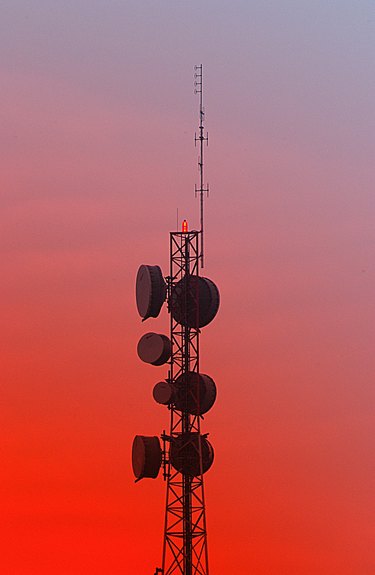
Microwave radio transmission has been used for wireless data transmission since before the terms wireless broadband or WiFi came into common usage. It was primarily used by businesses to connect separate office buildings or locations. Transmission was limited by slower data speeds, line-of-sight connections and bandwidth issues. The development of WiMAX -- Worldwide Interoperability for Microwave Access -- technology has improved upon these shortcomings.
Pro -- Lower Initial Costs
Video of the Day
The costs of installing a microwave tower are significantly less than those of installing traditional buried cable systems, such as DSL or cable. WiMAX technology has a greater range than traditional WiFi and is not limited to line-of sight access, providing for a larger potential customer base per tower. WiMAX operates on frequencies both licensed and non-licensed. The system is governed by IEEE 802.16 standards, which provides a feasible economic model and regulated environment for wireless carriers.
Video of the Day
Con -- Interference
Radio frequency transmissions can be adversely affected by weather conditions and terrain. Temperature, humidity, precipitation and wind can all cause interference with RF communications. Topographical features like hills and valleys can reflect or block signals. The density and height of nearby trees will also affect reception. Lakes, rivers and other water formations are extremely reflective surfaces in regards to radio transmissions. Large buildings can also create a "shadow" which leaves a dead spot directly behind the structure. These obstacles necessitate proper layout and planning of the wireless networks to minimize signal degradation.
Pro -- Mobility
WiMAX was the first of the Fourth Generation, 4G, wireless technologies. Fixed networks can provide service within a 30 mile area. As long as a customer is within that range they are able to access the service. Mobile networks have a range of about 2.5 miles, providing even greater flexibility and availability of connection.
Con -- Shared Bandwidth
All connections within range of a tower share the same bandwidth. WiMAX offers speeds up to 70Mbps, but this is attainable only in ideal conditions and with a single user. Connection speeds are significantly reduced as more and more users connect to the network. Slower speeds also result from being farther from the tower.